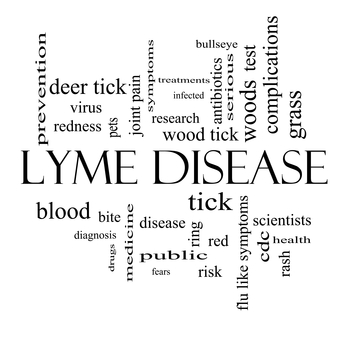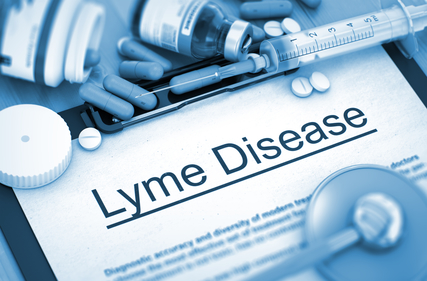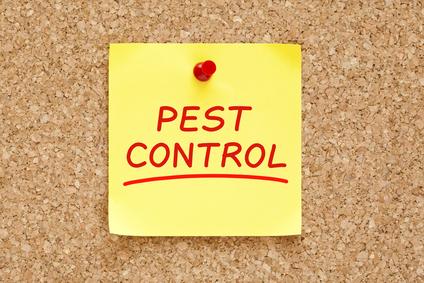Ticks and Lyme Disease: This Information Will Empower You
- Esther M.
- Feb-20-2021
- Lyme Disease
In the recent past, efforts towards creating awareness about Lyme Disease have increased. Even so, it is never a waste of time to remind yourself of the risks, incidences, and preventive measures that are helpful. This is especially so for a health matter that is likely to affect the quality of your life. However, the good news is that with the latest information at your fingertips, you can make decisions that will be beneficial to you and those you love. When it comes to pests, there’s no such thing as too much information.
What Is Lyme Disease?

So, what’s all the fuss about this disease anyway? Why do you need to get to know it so well? How can it affect you? What are its signs and symptoms? Find out these and more answers in the following post:
Lyme disease is an infectious disease caused by Borrelia burgdorferi bacteria. The bacteria are transferred to humans by tick bite, specifically by blacklegged ticks (commonly known as deer ticks). The condition is named for the location in which it was first described, the town of Lyme, Connecticut.
If not treated with antibiotics, Lyme disease follows three stages: early localized, early disseminated, and late disseminated infection. A small percentage of individuals have symptoms that persist months or years after treatment, which is called post-treatment Lyme disease syndrome.
A characteristic feature of Lyme disease, and the key feature of early localized infection, is a slowly expanding red rash on the skin (called erythema migrans) at the site of the tick bite; the rash is often bull’s-eye shaped. Flu-like symptoms and enlarged lymph nodes (lymphadenopathy) are also early signs of infection. Most people who are treated at this stage never develop further symptoms. Read more at MedlinePlus…
Recent Stats on Lyme Disease

Another thing to look out for is the incidence of Lyme Disease in the area where you live. It helps you take extra measures to ensure you’re safe if you know you’re in a high-threat zone. You would carry an umbrella when the weather forecast predicts some rainfall. Similarly, statistics on Lyme Disease will help you know how you should operate. Here are some of the latest:
We estimate that ≈476,000 persons were diagnosed with Lyme disease annually during 2010–2018. This figure is greater than an estimate of ≈329,000 annual diagnoses for the period 2005–2010. Although both estimates were calculated by using similar methods, we implemented a slightly more restrictive approach that prohibited any patient with a diagnosis of Lyme disease from being counted more than once during the 9-year study period (3). The observed increase in Lyme disease diagnoses between these 2 periods parallels increases in cases reported through surveillance (1). Read more at CDC…
With this information, it is helpful to be extra vigilant in preventing any incidence of Lyme Disease in your family.
Prevention of Lyme Disease

There are several methods you can employ in keeping Lyme away. Here are some of them:
Cover up. When in wooded or grassy areas, wear shoes, long pants tucked into your socks, a long-sleeved shirt, a hat and gloves. Try to stick to trails and avoid walking through low bushes and long grass. Keep your dog on a leash.
Use insect repellents. Apply insect repellent with a 20% or higher concentration of DEET to your skin. Parents should apply repellant to their children, avoiding their hands, eyes and mouth.Keep in mind that chemical repellents can be toxic, so follow directions carefully. Apply products with permethrin to clothing or buy pretreated clothing.
Do your best to tick-proof your yard. Clear brush and leaves where ticks live. Mow your lawn regularly. Stack wood neatly in dry, sunny areas to discourage rodents that carry ticks.
Check your clothing, yourself, your children and your pets for ticks. Be especially vigilant after spending time in wooded or grassy areas. Deer ticks are often no bigger than the head of a pin, so you might not discover them unless you search carefully. Read more at Mayo Clinic…
You can tick-proof your yard in a professional way. When you call in the experts, you’ll be able to go the extra step in ensuring your yard is safe.
Backyard Bug Patrol’s barrier spray program is both reliable and efficient in keeping ticks off your yard. As a homeowner, you’ll be glad you chose to work with us. Call us today for the best services in town!
